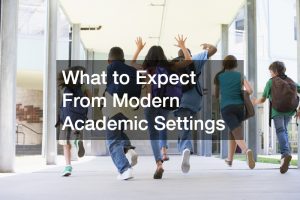Aside from disrupting businesses around the world, the pandemic also compelled schools and universities to shift to online classes to slow down the spread of the virus. While the health crisis is a serious matter that needs the full attention of the authorities, the situation also provided a unique opportunity to take stock of the current educational system and see if it is still consistent with the goals of providing a well-trained workforce in the future.
A study by the World Economic Forum showed that education systems had become increasingly disconnected from the needs of economies around the world. Globalization and rapid developments in different aspects of society were among the drivers of this disconnection from the realities of the world.
With this, schools and universities need to adapt quickly to equip the students with the necessary skills to make a significant contribution once they enter the workforce. The mismatch in the skills taught in the universities and skills needed in the workplace should provide enough push for schools and universities to make the necessary changes.
Even as traditional schools and universities have to evaluate their offerings, some programs are already available to meet the needs of the workplace. Programs like the SGUnited Skills Programme provide essential skills that readily meet the needs in the real world.
Even with these programs, schools and universities should work on their programs to allow them to align with the needs of today’s workforce.
Linking Education to Demand in the Workforce
One way schools and universities align their programs is by linking education to the demand in the workforce. Educational institutions should build partnerships with businesses and employers to give graduates the skills they need in the workplace.
Educational institutions should provide some skills: technology, creativity, innovation, interpersonal skills, problem-based learning, and collaborative learning. These institutions should also train their graduates to become lifelong learners to stave off the challenges posed by intelligent machines when taking over their jobs. This makes it challenging for these machines to perform the jobs they are doing.
Adaptability and entrepreneurship should be cultivated as core competencies among the students. Educational institutions should encourage these and include them in the curriculum in addition to the basic skills their graduates need in their future professions.
Additionally, the students should also receive training on crisis readiness to reduce social panic when a crisis confronts them. Society needs to work on these future-ready skills to ensure the students can conquer challenges they face in the real world.

Work-Based Learning
Educational institutions can also implement work-based learning strategies that combine classroom teaching with real-world experiences. Students who go through internships can readily apply the skills and knowledge they acquired in school to a workplace setting. These students also have a better chance of getting employed after they graduate from the university.
Aside from internships, simulated experiences and project-based experiences are also work-based learning strategies. These experiences simulate what happens in the real world.
Work-based learning offers benefits for both the students and the businesses. The students gain first-hand experience in their chosen fields that reinforce what they learned from the school. There are even instances when businesses absorb interns into their workforce once they graduate.
On the other hand, businesses will have a talent pool from where they can get employees from. It also increases the opportunities for businesses to expand with the innovative talent they have at their disposal.
Prepare for Future Changes and Challenges
Authorities are acknowledging the importance that students and workers should adapt to the new realities of life. This led to the creation of SkillsFuture to promote lifelong learning. The national movement aims to develop the skills of Singaporeans to allow them to reach their full potential in life. It doesn’t limit itself to a specific age group and aims to develop an inclusive society and an advanced economy through the skills and contributions of individual citizens.
Despite this notable objective, there’s still a preference for academic education over vocational training. Additionally, there is minimal participation among senior citizens in the program. With this, educational institutions need to implement reforms to allow them to meet the changing needs of the economy and society as a whole. It will also require adequate support from the authorities and the private sector to bridge the gap between education and the real world. But if everyone works together, the future generation will be better prepared to face any challenges they have to deal with in the future.
All stakeholders should work together to ensure the goals of educational institutions are properly aligned to meet the needs of the workplace in Singapore.



